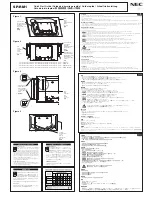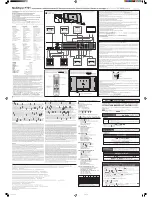
Transport, storage, installation
5
GasLab Q2
G a s Q u a l i t y A n a l y z e r
Page 35 of 135
Working steps for removing gas cylinder
1.
►
Close the gas cylinder main valve.
2.
►
Depressurize the connected gas line
3.
►
Remove connections from the gas cylinder
4.
►
Protect the connection thread of the cylinder valve with the associated screw cap.
5.
►
Put the protection cap on the gas cylinder.
6.
►
Loosen the protection against falling down and remove the gas cylinder
7.
►
Protect the connection thread of the unused cylinder connection with a suitable
protective cap if a new gas cylinder is not to be installed immediately.
5.3.5 Connecting the exhaust tubing
In regular measuring mode, the entire gas flows through the device and is discharged via the
exhaust tubing to secure ventilation areas outside buildings. The gases from measurement and
(if used) bypass must be vented without back pressure through this exhaust tubing. It is connected
through a 6 mm Swagelok connector and needs to have an inner diameter of at least 4 mm.
It must be laid separately for at least 1 m (recommended 3 m) before it can be connected to vents
of different devices with larger diameter tubing. For long lines or manifolds, the minimum inner
diameter of 12 mm (1/2 ") is needed. If the bypass is heavily flowed through, it should have a
separate exhaust tube in order to avoid back pressure.
If the bypass is not used, the protection cap on the bypass vent has to be
replaced by a blind plug for proper sealing. The associated needle valve on
the left side of the device should be opened only when the bypass is used.
Exhaust lines must vent atmospherically and be protected against back-
pressure, i.e. from other exhaust lines when combined. Exhaust lines
should be lead to save venting areas outside buildings. The exhaust outlets
should be protected from dirt, liquids condensation, ice and foreign objects
i.e. insects. Exhaust lines should always increase in diameter and never
decrease; when combining exhausts, the diameter should increase
accordingly and no back-pressure should occur.
Steps to connect exhaust tube
1.
Connect the exhaust to the respective outputs.
2.
Connect the line directly after you have taken the dirt protection away from the connection of Q2.
3.
Since a leak test
can’t take place with the device shut off, the exhaust tube has to be examined,
while flushing, with a gas detector for tightness.
This check should be done first when the
device is installed and running.
The breather line (if connected) is not part of the exhaust system and may
never be connected to other lines.
















































